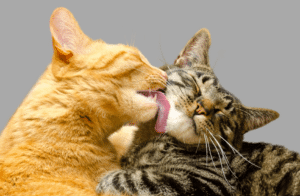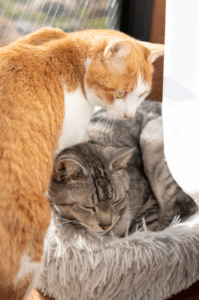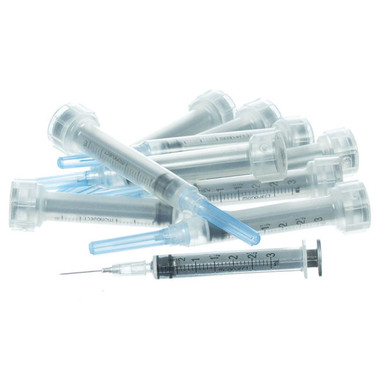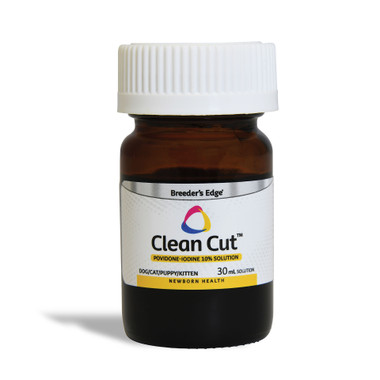Oh no! my cat's in heat...can you spay a cat in heat?
Estimated 0 min read
The choice of whether to spay your cat in heat raises questions and concerns among pet owners. This common surgical procedure, while routine for veterinarians, becomes more complex when a cat is in heat. Understanding the implications, risks, and benefits of spaying during heat is crucial for making informed decisions about your cat’s health.
In this comprehensive guide, we’ll explore the ins and outs of what spaying a cat in heat entails. Whether you’re a new cat owner or an experienced feline enthusiast, this information will equip you with the knowledge to navigate this important aspect of feline care.
What to know about spaying a cat in heat
- Cats can be spayed while in heat, but it involves increased surgical risks due to increased vascularity and tissue fragility
- The ideal age for spaying a cat is between 3-6 months, preferably before the first heat cycle to maximize health benefits
- Spaying a cat in heat may result in longer surgery time, higher costs, and potentially longer recovery periods compared to spaying between heat cycles
Understanding Cat Heat Cycles

Mature cat cycles or more predictable
Cat heat cycles, also known as estrus, is when a female cat becomes receptive to mating and can potentially become pregnant.
Female cats are polyestrous, meaning they experience multiple heat cycles throughout the breeding season. These cycles are primarily influenced by the length of daylight, which is why cats typically enter heat during the longer days of spring and summer. However, indoor cats exposed to artificial lighting may cycle year-round, presenting a unique challenge for pet owners.
The onset of heat cycles marks a cat’s entry into sexual maturity. This milestone typically occurs between 6 to 9 months of age, though it can happen as early as 3 months or as late as 18 months, depending on various factors such as breed and overall health. It’s important for pet owners to be aware of this timeframe, as it signals when a cat might begin exhibiting heat-related behaviors and becomes capable of reproducing.
Cat Heat Cycles
Once a cat reaches sexual maturity, her heat cycles follow a predictable pattern. Each cycle usually lasts about three to four weeks, though it can extend up to 19 days in some cases. If the cat doesn’t become pregnant, she may re-enter heat in as little as a week or two. This rapid cycling can continue throughout the breeding season, which for many cats spans from February to October in the Northern Hemisphere.
The signs of a cat in heat can be subtle at first but often become more pronounced as the cycle progresses. A cat in heat may display increased affection, rubbing against people and objects more frequently. She might vocalize excessively, making loud, plaintive calls known as “caterwauling” to attract potential mates. Physical signs include a swollen vulva and a characteristic posture called lordosis, where the cat crouches low with her hindquarters raised and tail held to one side.
Other behavioral changes during heat can include restlessness, decreased appetite, and an increased desire to escape outdoors in search of a mate. Some cats may also exhibit urine marking or spraying to advertise their reproductive status to nearby males. These behaviors can be distressing for both the cat and her owners, often leading to discussions about spaying.
Can you spay a cat in heat?
The question of whether you can spay a cat in heat is one that many pet owners grapple with. The short answer is yes, it is possible to spay a cat during her heat cycle. However, this decision comes with important considerations that both veterinarians and pet owners must carefully weigh.
What are the risks to spaying a cat in heat?

So, what are the risks spaying during heat?
Traditionally, veterinarians have preferred to perform spay surgeries either before a cat’s first heat cycle or between cycles. This preference stems from the physiological changes that occur during estrus. When a cat is in heat, her uterus becomes engorged with blood. This increased elevates the risk of excessive bleeding during the operation.
The fragility of the tissues during heat is a primary concern for veterinarians. The reproductive organs, particularly the ovaries and uterus, become more delicate and susceptible to damage. This requires the surgeon to exercise extra caution and employ more meticulous surgical techniques to avoid complications. This can lead to a longer recovery time for the cat and may necessitate blood transfusions.
Due to these additional challenges, spaying a cat in heat typically takes longer than a routine spay surgery. The increased complexity of the procedure requires more time for careful tissue handling and meticulous suturing. This extended surgical time not only increases the duration of anesthesia for the cat but also impacts the veterinary clinic’s scheduling and resources.
The additional time, specialized techniques, and potential for complications often translate to higher costs for the pet owner. Many veterinary practices charge extra fees for spaying cats in heat to account for the increased risk and resource utilization. It’s important for pet owners to be aware of these potential additional costs when considering the timing of their cat’s spay surgery.
Post-operative care for cats spayed while in heat also requires special attention. These cats may experience more discomfort and swelling at the surgical site compared to those spayed between heat cycles. There’s also a slightly higher risk of post-operative complications, such as seromas (fluid accumulation) or dehiscence (wound separation). Owners need to be vigilant in monitoring their cat’s recovery and should be prepared for a potentially longer healing period.
Is it ever necessary to spay a cat in heat?

Monitor your cat post surgery
There are situations where spaying a cat in heat may be necessary or beneficial. For instance, in cases where the cat’s heat cycles are closely spaced or there’s a high risk of unwanted pregnancy, the benefits of immediate spaying might outweigh the risks. Additionally, in shelter environments or when managing feral cat populations, the opportunity to spay a cat might be limited, making it necessary to proceed with the surgery regardless of the cat’s estrus status.
One unique consideration for cats spayed during heat is the persistence of estrus behaviors immediately after surgery. Even though the reproductive organs have been removed, the hormones already circulating in the cat’s system can continue to influence her behavior for a short time. This means that the cat may still display signs of being in heat for a few days post-surgery, which can be confusing for owners who expect an immediate change in behavior.
The Best Time to Spay Your Cat
Determining the best time to spay your cat is a crucial decision that can significantly impact her long-term health and well-being.
The current consensus among veterinary professionals is that the ideal age range for spaying a cat falls between three to six months old. Spaying within this timeframe, particularly before the first heat cycle, offers numerous health benefits. Most notably, it virtually eliminates the risk of mammary cancer later in life. Cats spayed before their first heat have a 0.5% chance of developing mammary cancer, compared to an 8% risk for cats spayed after just one heat cycle.
However, the timing of a cat’s spay surgery isn’t solely dictated by age. Veterinarians also consider the cat’s overall health, weight, and breed-specific factors. Some larger breeds may benefit from waiting until they are slightly older to ensure proper bone and joint development. Conversely, veterinarians sometimes opt for spaying as young as eight weeks old, in what’s known as pediatric spaying.

Your vet will know the best time to spay your cat
For cats that have already experienced their first heat, veterinarians often recommend waiting until the cycle has ended before scheduling the surgery. This approach allows the reproductive organs to return to their normal, non-engorged state. The interestrus period is often considered an ideal time for spaying.
Despite best efforts to time the surgery optimally, some cats may enter heat before their scheduled spay appointment. In such cases, pet owners face a decision: proceed with the surgery or wait for the cycle to end. If the decision is made to wait out the heat cycle, it’s crucial to prevent the cat from mating during this time. This may involve keeping indoor cats strictly confined and away from any intact male cats. For outdoor cats, it might be necessary to keep them indoors temporarily.
Understanding the intricacies of spaying a cat in heat empowers you to make informed decisions about your feline companion’s health.
While the procedure is possible, it’s clear that timing and professional veterinary guidance are crucial. As responsible pet owners, our commitment to our cats extends beyond reproductive health.
Banixx Cat Care

Banixx Pet Spray
Remember, a healthy cat is a happy cat, and your informed choices play a vital role in ensuring a long, joyful life for your furry friend. Explore ourwebsiteto discover more about holistic cat care and how Banixx can be your partner in maintaining your cat’s optimal health.
Want info onhome remedies for cat ear infections? Orhow long to quarantine a cat with ringworm? Check more out on ourcat blogto see what else we’ve posted!
Sources
https://bettervet.com/resources/pet-health-care/can-you-spay-a-cat-in-heat#:~:text=Key%20Takeaways%3A,complications%20during%20the%20surgical%20procedure.
https://www.catster.com/cat-health-care/can-you-spay-cat-in-heat/
https://www.petmd.com/cat/general-health/can-you-spay-a-cat-in-heat
https://www.veterinarypracticenews.com/can-animals-in-heat-be-spayed/
https://www.vet.cornell.edu/departments-centers-and-institutes/cornell-feline-health-center/health-information/feline-health-topics/spaying-and-neutering

















